| item(s), Total: $0.00 View Cart |
| Shopping cart is empty. |
It's getting busier at Green Life; so we thank you for your patience if you're coming out on a busy day or trying to get through on the phone. It's that time of year again - it's time to VOTE for us in the Organic Consumers' Choice Awards! The Green Life Soil Co has entered in the category of 'Organic Specialist' - and we'd appreciate your vote. Click on the link here to cast your vote... Voting is open until midnight on 7th October. THANK YOU!
Our round of workshops for Spring is now underway. This past weekend Leesa from The Greenhouse Organic ran her popular Propagation workshop. The attendees had a great couple of hours learning how to get the most from their Spring gardening, and left with a heap of goodies that they'd propped in class. (See photo below right.) If you missed out - the next Propagation workshop is 20th October; so sign up today. LOTS of other fantastic sessions are coming up over the next couple of months - so check them all out here.
As you're ready to replant your garden beds for Spring, have a look at some of our most popular (and free) growing guides on our website:- We've been around for more years than we'd care to remember (October marks our 17th anniversary!) and in the time we've had our website, we've accumulated lots of helpful information & tips in articles and newsletters we've put together. Use the 'search' option (top left on the website navigation) and see what you can find. You may need to check out a few links but HOPEFULLY you'll find one that takes you to the information you're looking for. And remember ~ we're happy to receive your suggestions on things for future newsletters you'd like to learn more about. So HAPPY SPRING GARDENING ~ we hope to see you soon. In This Newsletter:Jobs for the September Garden
What to Plant Now Jobs for the September Garden
What to Plant NOWSuch an exciting time for gardeners, as there's SO MANY THINGS to grow now! Other plantings to investigate are: Artichokes (Globe & Jerusalem), Asian Greens, Asparagus, Beans, Beetroot, Broccoli*, Cabbage*, Capsicum, Chilli, Carrot, Celery/Celeriac, Cucumber, Dill, Eggplant, Endive, Fennel, Kale*, Kohl Rabi*, Leek, Lettuce, Onion, Parsnip, Peas, Potato, Pumpkin, Radish, Rocket, Rockmelon, Silverbeet, Snow peas, Spring onion, Strawberries, Sweetcorn, Tomatoes, Turnip, Watermelon, Zucchini. * Brassicas will grow in this window before summer... but it's not the ideal time of year to plant them as many pests will become more active as it warms up (eg. cabbage moth). If you're wanting to grow them it might be best to consider insect netting (available from Green Life) to protect your garden from pests. Many herbs are becoming available once more (eg. Sage and Comfrey) and it's almost time to plant Basil; it does prefer warmer conditions so keep that in mind. See our Herb Planting Guide for Perth. Each week we'll be getting in new varieties of herbs and vegies as things become available from the wholesalers/growers ~ it's exciting! Garden Pests - Aphids
They love the succulent new growth of plants - which is why they're prevalent in Spring and early Summer when plants are in this new growth phase. Many are also parthenogenetic - which means they don't need males to reproduce, and give birth to live young - at least early in the season. This means their numbers build up VERY quickly as their life/reproduction cycles are so short (7-14 days in favourable conditions), and big numbers can mean big damage to your precious plants. There are many types of aphids (well over a hundred!), and some are very specific in their host plants - and guaranteed there'll be one or two varieties that will find your garden in Spring.
Many other aphids (common to roses and your brassicas) can be dislodged with a strong jet of water. As the adults aren't particularly mobile, they find it difficult to get back up on the plants to feed, and will often be eaten by other insects in that process.
An unusual but highly effective aphid deterrent is reflective mulch! While aphids are active, lay foil around your plants. The light reflected upwards under your plants discourages aphids and/or makes them easier for predators to find. There's no need to keep it there all summer - just while the aphids are most active. See photo below/right.
1. Get a white ice-cream container. Besides hoverflies, other beneficial insects that feed on aphids include lacewings, ladybirds, spiders, predatory wasps and flies and even some small birds. Encouraging biodiversity and having a range of flowering plants to attract beneficial insects is what to aim for in an organic garden.
Garlic and chilli sprays are often deterrents for aphids (except the black allium aphids - as discussed) - but like all organic sprays you need to treat your plants regularly (a couple of times a week). We have a recipe on our website here. Interestingly, you can also boil up turnips and parsnips, mash and steep overnight, strain, dilute 50:50 and use the water as a spray for aphids and red spider mite - so members of the turnip family* are obviously a useful plant to have in the assault against aphid attack!
For commercial ready to use sprays - look for a suitable eco-oil or pyrethrum spray. Use later in the day (when bees are less active) and only if you need to. Hopefully these strategies (or a combination of them) will help you win the war on sap-suckers (without having to resort to strong pesticides) this Spring. VIP Special
It's the perfect time to be incorporating Charlie Charcoal into your garden, ahead of summer. Don't wait until the heat has stressed your plants and the soil is already dry - adding things like Cassies Clay and Charlie Charcoal NOW will keep the moisture bank in the ground and keep your plants happy for much longer; and you'll have less issues with re-wetting the soil and water repellency. Normally 25L bags are $18 in store. For the remainder of September price is $15 per bag in store & online to VIP's - remember you must sign into the VIP section to see the special prices - they're not available to everyone! In store shoppers - please ASK for the September newsletter discount. (Other retailers will have stock available AT THEIR REGULAR RETAIL PRICING - please don't ask them to honour our discount!) Charlie Charcoal can be incorporated at the same time as other soil improvers and/or fertilisers. Ideally, dig it in, or if you have existing plants, lightly rake it into the soil profile. We recommend 'pre-charging' Charlie Charcoal because it is so effective at holding nutrients - why not get them into the soil at the same time? Pre-charging can be done by soaking Charlie Charcoal in some liquid fertiliser before using; or if that's a bit tricky - use Charlie Charcoal straight from the bag but when you're done, give the soil a GOOD soaking with a liquid fertiliser straight away. If you really want to get things going with a bang, add some of the freeze dried microbes to the liquid; they'll colonise the charcoal and start making the nutrients plant available. (Microbe sachets are available from GLSC.) Here's a link to a short video we made about Charlie Charcoal this week. https://www.youtube.com/embed/IjKcjDBnGlg?rel=0 Photo Contest Winner
Her comments with the photo were: "Just over one year from tube stock to this, native concentrate tilled in to soil before planting. This one is Grevillea vestita, a pink flowering form from Australian Native Nursery in Oakford. I believe it also comes in white but I'm not sure. Thriving on our pH9 sand/soil in Currambine with native concentrate tilled in to this whole area before planting, coarse mulch and minimal drip irrigation over first summer. The leaves are spikey to the touch as a PSA for anyone who feels inspired! It is even more smothered in flowers at the moment than before." Keep sending in your pictures with a comment or two about your garden. There's a winner drawn at random each month - you've got to be in it to win it! Send your photos to us via email (labelled 'photo competition') or via our Facebook page. Retail Outlets UpdatePlease support the local & independent businesses who support us. You'll find great advice and friendly service close to home!
|



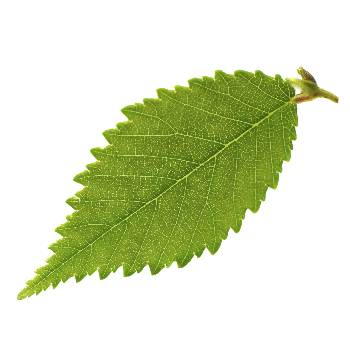 Welcome to Spring! Such an exciting time to be in the garden as things are waking up from Winter and before the Summer sun reaches the extremes of heat once more. I hope you've enjoyed some glorious weather following the rainy days.
Welcome to Spring! Such an exciting time to be in the garden as things are waking up from Winter and before the Summer sun reaches the extremes of heat once more. I hope you've enjoyed some glorious weather following the rainy days.
.JPG) One of the next sessions is 'Edible Weeds' on the 22nd September. While researching this newsletter, I was reading through Jackie French's book "The Earth Gardeners Companion' - and she had this to say in her usual entertaining style: "Eating your Weeds. Spring was the traditional time to eat weeds, mostly because there was nothing much else around. A lot of weeds are edible. This doesn't mean they taste good - most weeds taste horrid; either bitter or slimy. If weeds tasted good, animals would eat them. That would get rid of them and they wouldn't be called weeds. Weeds used to be one of the great starvation foods. If you didn't have any other tucker, you'd fill up on dock seeds or couch grass roots. Both of these are only edible if you cook them very well. But they are not something you'd fancy for dinner. Don't knock all weeds though. Some are DELICIOUS, especially at this time of year. Many weeds are bitter in summer's heat, but fresh new leaves are lovely at the end of winter." Curious?? Then come along and find out more about the DELICIOUS ones that might be growing right under your nose...
One of the next sessions is 'Edible Weeds' on the 22nd September. While researching this newsletter, I was reading through Jackie French's book "The Earth Gardeners Companion' - and she had this to say in her usual entertaining style: "Eating your Weeds. Spring was the traditional time to eat weeds, mostly because there was nothing much else around. A lot of weeds are edible. This doesn't mean they taste good - most weeds taste horrid; either bitter or slimy. If weeds tasted good, animals would eat them. That would get rid of them and they wouldn't be called weeds. Weeds used to be one of the great starvation foods. If you didn't have any other tucker, you'd fill up on dock seeds or couch grass roots. Both of these are only edible if you cook them very well. But they are not something you'd fancy for dinner. Don't knock all weeds though. Some are DELICIOUS, especially at this time of year. Many weeds are bitter in summer's heat, but fresh new leaves are lovely at the end of winter." Curious?? Then come along and find out more about the DELICIOUS ones that might be growing right under your nose...  Linda & The Team @ The Green Life Soil Co
Linda & The Team @ The Green Life Soil Co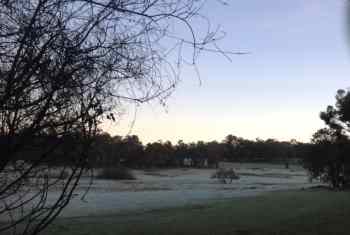 Frost. If you live in a frost-prone area, September is the likely time you'll see these strike hard. As the weather clears, night time temperatures can get below freezing and this is when you'll likely to see frost burn in your garden. Check out our previous article here on how to prevent frost damage.
Frost. If you live in a frost-prone area, September is the likely time you'll see these strike hard. As the weather clears, night time temperatures can get below freezing and this is when you'll likely to see frost burn in your garden. Check out our previous article here on how to prevent frost damage..JPG) Sow seeds. SOOOO many things to be planted now! It's the perfect time to get most summer vegies and flowering annuals started from seed. We've got a good range of heritage seeds in stock , and our Certified Organic Seed Raising Mix - so come and see us and get your green thumb on! It's still a little early to plant seeds directly into garden beds - you're better off waiting until the soil temperature has warmed up. As Jackie French says" "plant tomatoes when the soil is warm enough to sit on with bare buttocks. (In suburban areas, use the back of your wrist.)"
Sow seeds. SOOOO many things to be planted now! It's the perfect time to get most summer vegies and flowering annuals started from seed. We've got a good range of heritage seeds in stock , and our Certified Organic Seed Raising Mix - so come and see us and get your green thumb on! It's still a little early to plant seeds directly into garden beds - you're better off waiting until the soil temperature has warmed up. As Jackie French says" "plant tomatoes when the soil is warm enough to sit on with bare buttocks. (In suburban areas, use the back of your wrist.)" Save your seed. Some winter crops will be setting seed now. Coriander, Broccoli, Rocket and older Leeks all come to mind. Allow your best plants to set seed and save it for next year - or in the case of coriander and rocket, perhaps let it self-seed if you're happy to have it come up in the same place next year (although watch rocket - it is VERY vigorous and you'll have it everywhere - but it makes a great green manure crop!). Leave your healthiest/most productive/most pest-resistant plants to go to seed and save these great genetic specimens which have adapted to the growing conditions in your yard to use again next year.
Save your seed. Some winter crops will be setting seed now. Coriander, Broccoli, Rocket and older Leeks all come to mind. Allow your best plants to set seed and save it for next year - or in the case of coriander and rocket, perhaps let it self-seed if you're happy to have it come up in the same place next year (although watch rocket - it is VERY vigorous and you'll have it everywhere - but it makes a great green manure crop!). Leave your healthiest/most productive/most pest-resistant plants to go to seed and save these great genetic specimens which have adapted to the growing conditions in your yard to use again next year. Topdress your lawn. Fertiliser is fine to give your lawn a flush of growth, but if there's divots and patches that haven't greened up, or you know that the soil preparation was less than ideal when the lawn was laid, adding a quality top dressing can help improve the soil structure and assist with water retention. (We see so many people who are struggling with lawns - if you're about to put down a new lawn please talk to us about improving the soil FIRST. It is definitely worth the investment and you avoid having to 'fix it' [which is much harder] 12 - 18 months down the track.)
Topdress your lawn. Fertiliser is fine to give your lawn a flush of growth, but if there's divots and patches that haven't greened up, or you know that the soil preparation was less than ideal when the lawn was laid, adding a quality top dressing can help improve the soil structure and assist with water retention. (We see so many people who are struggling with lawns - if you're about to put down a new lawn please talk to us about improving the soil FIRST. It is definitely worth the investment and you avoid having to 'fix it' [which is much harder] 12 - 18 months down the track.)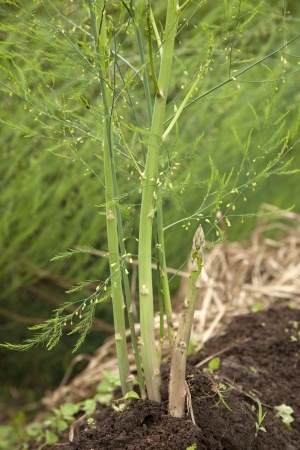 There's still time to plant POTATOES and ASPARAGUS (pictured right) - and we have stock left of both of these. Both are starting to shoot so GET THEM IN THE GROUND and they'll be off to a flying start.
There's still time to plant POTATOES and ASPARAGUS (pictured right) - and we have stock left of both of these. Both are starting to shoot so GET THEM IN THE GROUND and they'll be off to a flying start. 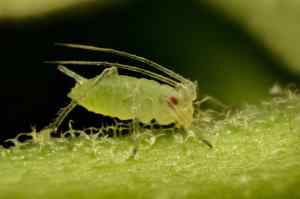 One of the common insect pests that people are struggling with right now are aphids. These are small, sap-sucking insects that can have devastating effects on flowers and vegetable crops, and can spread diseases around your garden as they visit sick plants then transfer to healthy ones - taking infections with them.
One of the common insect pests that people are struggling with right now are aphids. These are small, sap-sucking insects that can have devastating effects on flowers and vegetable crops, and can spread diseases around your garden as they visit sick plants then transfer to healthy ones - taking infections with them.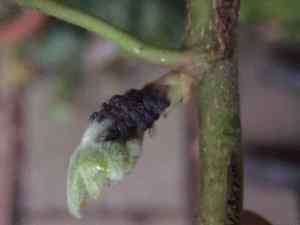 Some of the most voracious aphids are black aphids - which attack garlic and onion crops in a big way. Considering garlic sprays are commonly used as an aphid deterrent, the fact that this type of aphid CHOOSES garlic for breakfast shows you what tough critters these are to deal with. Plantings in the shade, and those that potentially have been fed too much nitrogen are often worse hit. Gardening Australia's Jeremy Coleby-Williams suggests using flowering turnips* - an Italian leaf vegetable crop (sold by Eden Seeds as 'Turnip Italian Cabbage') which flowers and attracts the Hoverfly adults (who lay eggs on the garlic so their larvae can feed).
Some of the most voracious aphids are black aphids - which attack garlic and onion crops in a big way. Considering garlic sprays are commonly used as an aphid deterrent, the fact that this type of aphid CHOOSES garlic for breakfast shows you what tough critters these are to deal with. Plantings in the shade, and those that potentially have been fed too much nitrogen are often worse hit. Gardening Australia's Jeremy Coleby-Williams suggests using flowering turnips* - an Italian leaf vegetable crop (sold by Eden Seeds as 'Turnip Italian Cabbage') which flowers and attracts the Hoverfly adults (who lay eggs on the garlic so their larvae can feed). 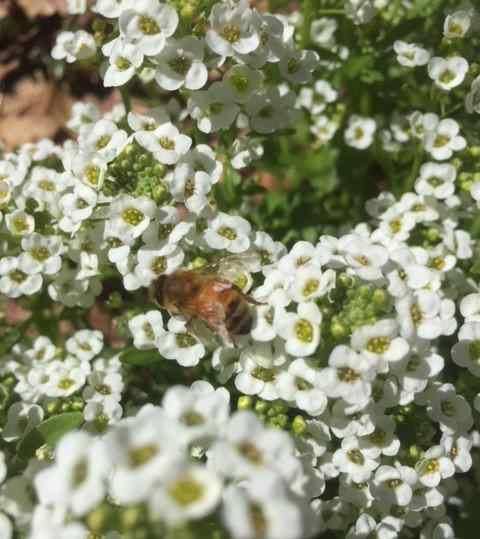 There are other flowering plants which attract hoverflies - including coriander, dill, fennel, yarrow, mint, parsley, thyme, lemon balm, cosmos, carraway, Queen Anne's lace, alyssum (pictured right) etc. So scatter these herbs/flowers throughout your vegie garden to bring in the good guys. Unfortunately aphid numbers tend to build up BEFORE the good guys arrive (largely temperature related - and also due to the fast reproductive cycle of aphids) - so you may need to be a little patient. If you're interested in learning more about attracting beneficials - this is a great article I found online.
There are other flowering plants which attract hoverflies - including coriander, dill, fennel, yarrow, mint, parsley, thyme, lemon balm, cosmos, carraway, Queen Anne's lace, alyssum (pictured right) etc. So scatter these herbs/flowers throughout your vegie garden to bring in the good guys. Unfortunately aphid numbers tend to build up BEFORE the good guys arrive (largely temperature related - and also due to the fast reproductive cycle of aphids) - so you may need to be a little patient. If you're interested in learning more about attracting beneficials - this is a great article I found online. 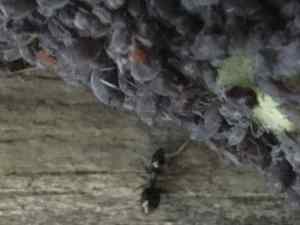 Aphids are ant cows. As the aphids eat your plants, they secrete a sticky 'honey dew' which is a food source for ants (and some other insects). In fact, some ants will protect aphid eggs underground in Winter, and bring them out in the Spring, distributing them around your plants - effectively 'farming' them like cows! So watch for ant activity around your aphids and you can help control their spread to an extent.
Aphids are ant cows. As the aphids eat your plants, they secrete a sticky 'honey dew' which is a food source for ants (and some other insects). In fact, some ants will protect aphid eggs underground in Winter, and bring them out in the Spring, distributing them around your plants - effectively 'farming' them like cows! So watch for ant activity around your aphids and you can help control their spread to an extent.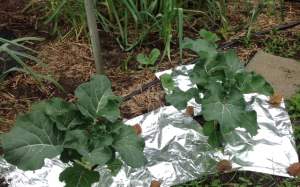 Yellow sticky traps are effective - but watch these as they can also harm beneficial insects and even small birds. Use judiciously. Other traps can be made - like this one taken from 'The Earth Gardener's Companion' by Jackie French - titled 'How to lure your sap suckers to destruction' (aphids, whitefly, beanfly and thrip)
Yellow sticky traps are effective - but watch these as they can also harm beneficial insects and even small birds. Use judiciously. Other traps can be made - like this one taken from 'The Earth Gardener's Companion' by Jackie French - titled 'How to lure your sap suckers to destruction' (aphids, whitefly, beanfly and thrip)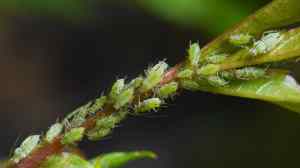 Avoid high nitrogenous growth in poor soil. Using organic gardening methods which feed the soil with slow release nutrients is better than a 'quick fix' of fertiliser to encourage growth. Also irregular watering will encourage sappy growth. Ensuring good soil health with constant moisture, drip irrigation and mulch will keep growth constant and healthy. Silicon, calcium and potassium are important plant nutrients to promote strong cell growth in your plants, which is why trace elements are important.
Avoid high nitrogenous growth in poor soil. Using organic gardening methods which feed the soil with slow release nutrients is better than a 'quick fix' of fertiliser to encourage growth. Also irregular watering will encourage sappy growth. Ensuring good soil health with constant moisture, drip irrigation and mulch will keep growth constant and healthy. Silicon, calcium and potassium are important plant nutrients to promote strong cell growth in your plants, which is why trace elements are important. Here's another one you may like to try - Jackie French's Glue Spray (for aphids, scale, caterpillars, thrips, etc.) - use every 5 - 7 days, and not in wet weather (as it will wash off).
Here's another one you may like to try - Jackie French's Glue Spray (for aphids, scale, caterpillars, thrips, etc.) - use every 5 - 7 days, and not in wet weather (as it will wash off).  This month's special offer for our special signed up VIP customers is CHARLIE CHARCOAL. In case you still haven't tried this in your garden - here's another chance to grab some bags at a reduced price - so give it a go!
This month's special offer for our special signed up VIP customers is CHARLIE CHARCOAL. In case you still haven't tried this in your garden - here's another chance to grab some bags at a reduced price - so give it a go! Congrats to Sarah L. who is this month's winner of our Photo Contest. She receives a $50 voucher.
Congrats to Sarah L. who is this month's winner of our Photo Contest. She receives a $50 voucher.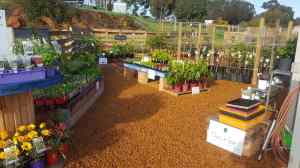 Beaufort Garden World - Inglewood 9271 0585
Beaufort Garden World - Inglewood 9271 0585




















